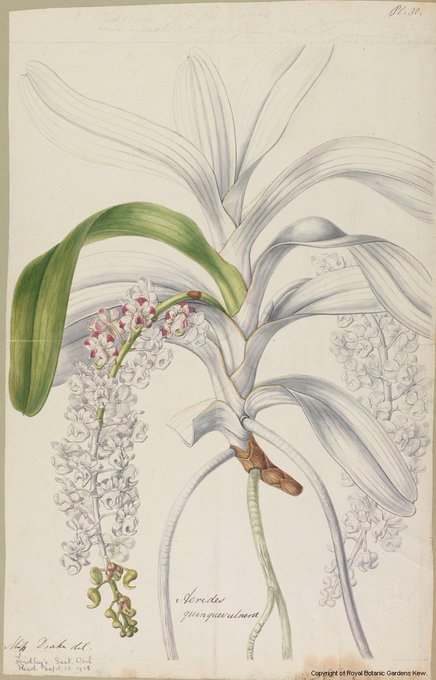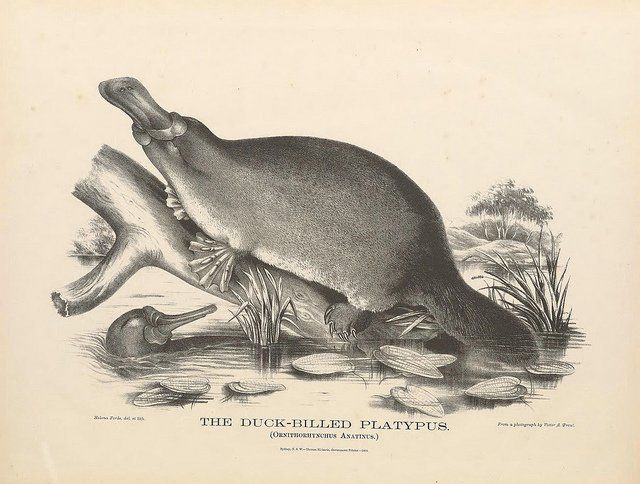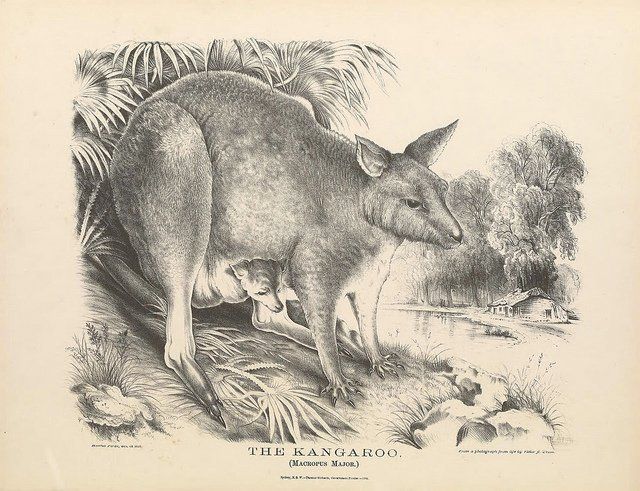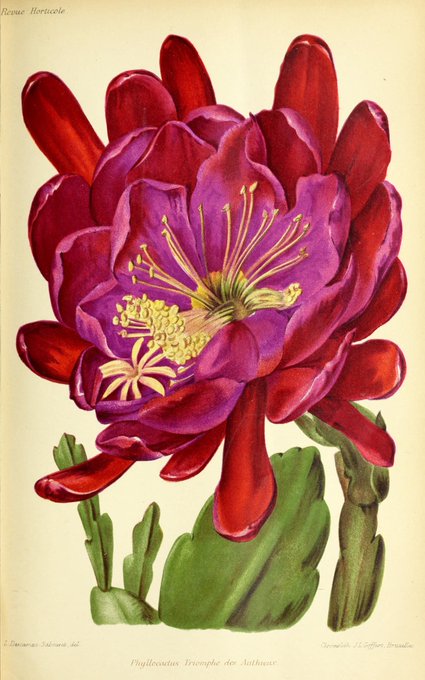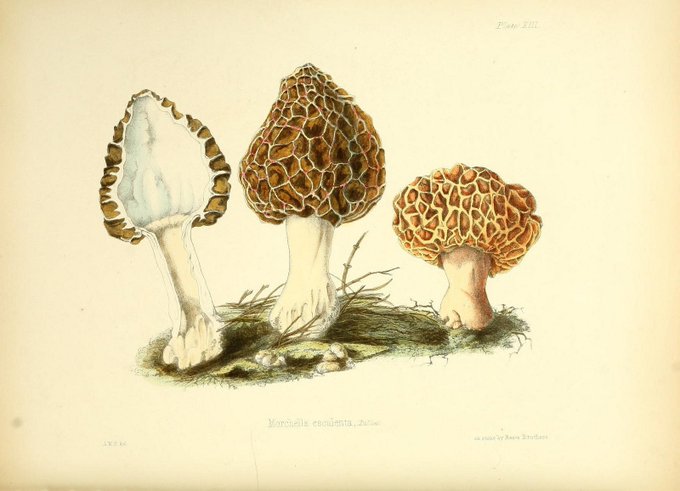naturalhisのTwitterイラスト検索結果。 655 件中 25ページ目
Artist Margaret Meen's botanicals graced the walls of royal palaces & scientific academies. While largely unknown today, her legacy is an important part of British botanical history. @oak_spring explore her life & work: https://t.co/vgueu0msWT #HerNaturalHistory #5womenartists
Mary Anne Stebbing illustrated many scientific publications on subjects ranging from botany to crustaceans. Sadly, her work was uncredited. Today, @Kew_LAA is digitizing some of her #SciArt for a project on female artists ➡️ https://t.co/g6SaEmpbjz #HerNaturalHistory
Elizabeth Gould introduced Australia's birds to the world (John couldn't draw). These, like so many of her exquisite works, accompany the descriptions of species new to science. https://t.co/plsIUZaKvc Via @BioDivLibrary @museumsvictoria #HerNaturalHistory #WomensHistoryMonth
Mary Anne Stebbing. Sarah Anne Drake. What do these women have in common? They are both botanical artists and two of those whose #SciArt is being digitized by @Kew_LAA in collaboration with @oak_spring. @hug_the_trees tells us more ➡️ https://t.co/g6SaEmpbjz #HerNaturalHistory
Black-headed python (Aspidites melanocephalus) is native to Australia & is not venomous. #SciArt by Harriet Scott Morgan for Snakes of Australia (1869) by Gerard Krefft. In #BHLib via @mayrlibrary of @MCZHarvard: https://t.co/3JefUQG80b #HERpers #HerNaturalHistory #5womenartists
Harriett Scott & Helena Forde, best known for their exquisite illustrations of butterflies, also expertly depicted Australia's mammals: "The Mammals of Australia" (1871) via @BioDivLibrary @SILibraries
#ScottSisters #WomensHistoryMonth #HerNaturalHistory https://t.co/vd3Lzshoxe
Tulip (Tulipa agenensis) #SciArt by Sarah Anne Drake for Edwards's botanical register v. 25 (1839), which was edited by botanist John Lindley. Drake illustrated many of Lindley's publications. In #BHLib via @mobotgarden: https://t.co/okdpJMd1Q3 #5womenartists #HerNaturalHistory
A closer look at the frontispiece in the 1730 Ed of Maria Sibylla Merian's work on the insects of Suriname: just to the left of the cherub's bum, I've only just noticed a miniature version of the book plus the pineapple from one of the plates growing in a pot!
#HerNaturalHistory
English artist Winifred Austen was a member of the Society of Women Artists, London. She provided #SciArt for The Wild Beasts of the World (1909), such this Philippine Flying Lemur (Cynocephalus volans) ➡️ https://t.co/wwERTEu8nr #5womenartists #HerNaturalHistory #MammalMonday
"The Cactaceae" (1919-1923) was produced as the 1st complete investigation on the Cactaceae family. It features stunning #SciArt by @NYBG artist Mary Emily Eaton, whose artworks were reproduced via chromolithography ➡️ https://t.co/MXGAp4WGKr #HerNaturalHistory #5womenartists
After seeing Audubon’s book ‘Birds of America‘ at the 1876 World’s Fair, Genevieve Jones wanted to create a similar book about bird nests & eggs. The result, pub in 1886 and focused on Ohio birds, was beautiful. https://t.co/kkigedKrAp #WomensHistoryMonth #HerNaturalHistory
Hawaiian flowers for #BotanicMonday! 🌺 Isabella McHutcheson Sinclair's "Indigenous Flowers of the Hawaiian Islands" (1885) is the most important record of Hawaiian flora in the 19th century. Read more about it via @chicagobotanic ➡️ https://t.co/HiGqIdkMuG #HerNaturalHistory
Our 1st tweet about women scientists of the past for #BritishScienceWeek - Emily Mary Bowdler Sharpe we think was the 1st woman to 1st author a paper in @JZoology read her paper here https://t.co/IUMLXEVmsP & our blog https://t.co/guoZ4Wf8Zc #HerNaturalHistory #WomensHistoryMonth
"Australian Lepidoptera and Their Transformations" (1890-98) depicts the life cycles of Australian moths & butterflies. It features #SciArt based on paintings by Harriet & Helena Scott. Explore it in #BHLib via @austmus @bhl_au ➡️ https://t.co/UMiqZKoWNS #HerNaturalHistory 🦋
"The Orchidaceae of Mexico and Guatemala" ([1837]-1843) is the largest botanical book ever produced with lithographic plates. It was beautifully illustrated chiefly by Sarah Anne Drake & Augusta Withers. In #BHLib via @mobotgarden ➡️ https://t.co/nP8O90Nqmf #HerNaturalHistory
Sun Cactus (𝘋𝘪𝘴𝘰𝘤𝘢𝘤𝘵𝘶𝘴 𝘴𝘱𝘦𝘤𝘪𝘰𝘴𝘶𝘴) for #FloraFriday and #HerNaturalHistory! #SciArt by Louise-Cécile Descamps-Sabouret for 𝘙𝘦𝘷𝘶𝘦 𝘏𝘰𝘳𝘵𝘪𝘤𝘰𝘭𝘦 (1899). Contributed in #BHLib by @HarvardLibrary Botany Library ➡️ https://t.co/n0JrXR5z0i #IWD2019
Anna Maria Hussey & her sister, Frances Reed, illustrated and described #fungi species they collected within "Illustrations of British Mycology" (1847-55). Explore their work in #BHLib via @NYBG ➡️ https://t.co/OcMUH84Xv9 #FungiFriday #5WomenArtists #HerNaturalHistory 🍄🍄
Otra iniciativa de @BioDivLibrary es esta enorme galería en #Flickr #WomenIlustratorsInNaturalHistory [https://t.co/MQbVTzR1Zk] que recopila muchísimos de los trabajos de estas ilustradoras de gran valor tanto artístico como científico #lavitrinadeltesoro #HerNaturalHistory
Sarah Stone (1760-1844) produced all 65 of the beautiful plates in "Journal of a voyage to New South Wales" (John White, 1790), many depicting new species. https://t.co/LSX91UEqev via @BioDivLibrary & @HarvardLibrary #WomensHistoryMonth #HerNaturalHistory
Elizabeth Blackwell's 𝘈 𝘊𝘶𝘳𝘪𝘰𝘶𝘴 𝘏𝘦𝘳𝘣𝘢𝘭 (1737-39) was a groundbreaking work on medicinal plants. Elizabeth drew, engraved, and colored all 500 plates herself. She undertook the project to help pay her husband’s debts. https://t.co/sBqgehEeKM #HerNaturalHistory











